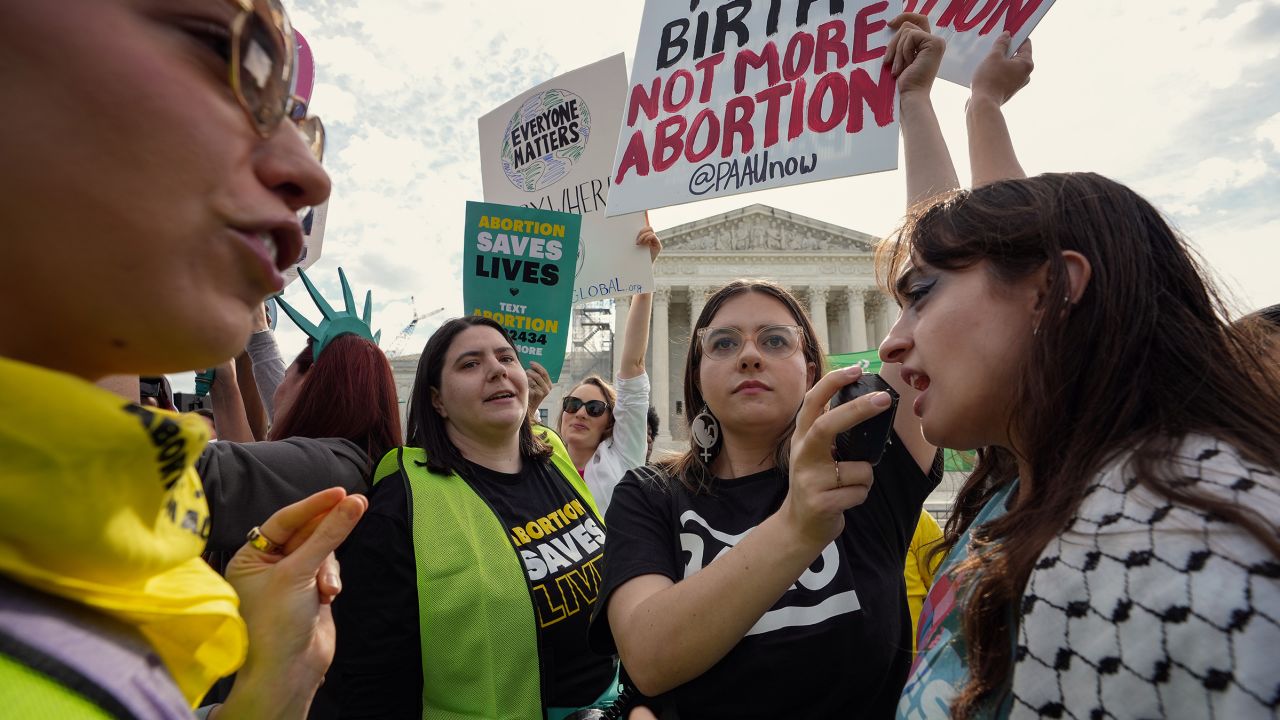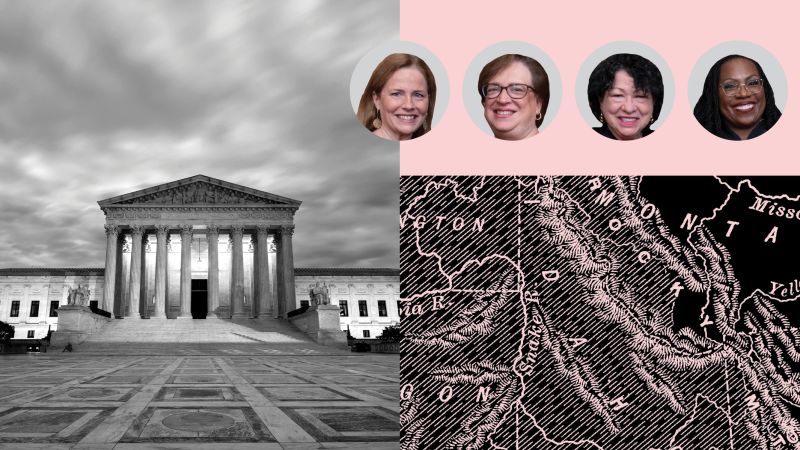CNN
—
The Supreme Court began the year poised to build on its 2022 decision overturning Roe v. Wade and to deliver a new blow to abortion access.
In January, the court took the extraordinary step of letting Idaho enforce its ban on abortion with an exception only to prevent the death of a pregnant woman, despite an ongoing challenge from the Biden administration arguing that it intruded on federal protections for emergency room care.
No recorded vote was made public, but CNN has learned the split was 6-3, with all six Republican-nominated conservatives backing Idaho, over objections from the three Democratic-appointed liberals.
But over the next six months, sources told CNN, a combination of misgivings among key conservatives and rare leverage on the part of liberal justices changed the course of the case.
The first twist came soon after oral arguments in late April, when the justices voted in private on the merits of the conflict between Idaho and the Biden administration. There suddenly was no clear majority to support Idaho, sources said. In fact, there was no clear majority for any resolution.
As a result, Chief Justice John Roberts opted against assigning the court’s opinion to anyone, breaking the usual protocol for cases after oral arguments.
That move would have marked a startling turn of events for any dispute, but it was particularly surprising here because the court had already given Idaho the advantage by granting its appeal before a hearing on the merits of the case could be held in a US appellate court.
Instead, a series of negotiations led to an eventual compromise decision limiting the Idaho law and temporarily forestalling further limits on abortion access from the high court. The final late-June decision would depart from this year’s pattern of conservative dominance.
This exclusive series on the Supreme Court is based on CNN sources inside and outside the court with knowledge of the deliberations.
White House response to overturning Roe
After the court in June 2022 overturned Roe v. Wade, more than a dozen states like Idaho began outright banning abortion. The Idaho law had exemptions only to prevent death of the pregnant woman and in instances of rape or incest. Other states instituted new restrictions on the procedure.
The Biden administration, supporting reproductive rights, tried to immediately counteract some effect of the Supreme Court’s decision. It issued formal guidance saying the Emergency Medical Treatment and Labor Act (EMTALA), which requires stabilizing treatment regardless of a patient’s ability to pay, would preempt any state abortion ban in situations when an emergency termination was needed.
In August 2022, the Justice Department sued Idaho, seeking an order that would block the state from enforcing its ban in emergency rooms when it conflicts with EMTALA. Idaho lost in an initial proceeding in a US district court, as a judge issued a temporary injunction against the abortion ban. While an appeal was pending, Idaho sought the high court’s intervention.

The impact of the justices’ January order allowing Idaho’s ban to take effect was urgent and immediate. The state’s largest provider of emergency services increasingly had to airlift pregnant women experiencing complications out of state.
As the weeks passed and Idaho and the federal government began formally making their case in filings before scheduled April oral arguments, the situation for pregnant women in medical emergencies – risking organ failure, the loss of fertility and permanent disability – became more evident.
So did defects in some of Idaho’s claims. Its lawyers argued that EMTALA would require hospitals to terminate a pregnancy if a woman’s mental health (rather than physical condition) required it and would force individual doctors to perform abortions despite conscience objections – two contentions US Solicitor General Elizabeth Prelogar said were groundless.
Idaho’s built-in lead began to slip, particularly against the larger national backdrop over agitation for reproductive rights and the politically charged presidential election season.
The court had given Idaho the advantage in January by granting its request for an early hearing. Such expedited review is allowed only when, according to Supreme Court procedure, “the case is of such imperative public importance as to justify deviation from normal appellate practice.”
During the April 24 hearing, signs that the conservative bloc was splintering emerged.
Justice Amy Coney Barrett, who had earlier voted to let the Idaho ban be enforced, challenged the state lawyer’s assertions regarding the ban’s effect on complications that threatened a woman’s reproductive health. She said she was “shocked” that he hedged on whether certain grave complications could be addressed in an emergency room situation.
Barrett’s concerns echoed, to some extent, those of the three liberals, all women, who had pointed up the dilemma for pregnant women and their physicians.
Doctors in Idaho had told the court that if they complied with federal emergency-care law and helped a pregnant woman in peril, they would be risking criminal conviction. Alternatively, if they transferred patients needing stabilizing care out of state, they risked seriously delaying medical attention and could exacerbate the harm.
Private vote and rare liberal leverage
Judging from the public arguments alone, there appeared a chance the court’s four women might vote against Idaho, and the five remaining conservatives, all men, in favor of the state and its abortion prohibition.
But at the justices’ private vote two days later, Roberts and Justice Brett Kavanaugh shattered any split along gender lines. They expressed an openness to ending the case without resolving it.
They worked with Barrett on a draft opinion that would dismiss the case as “improvidently granted.”
Barrett had come to believe the case should not have been heard before lower court judges had resolved what she perceived to be discrepancies over when physicians could perform emergency abortions, even if a threat to the woman’s life was not imminent.












